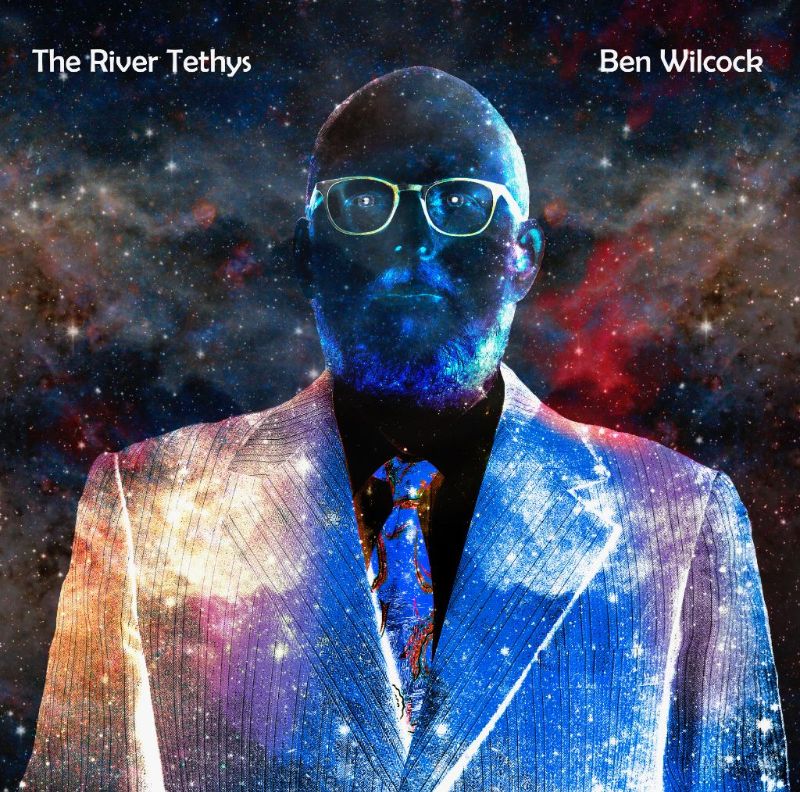It had been quite a while since the pianist and composer Ben Wilcock and I last caught up, so when I heard about his new album, I set up a ZOOM interview. It was a wide ranging discussion, more like a hang really, and because we were both relaxed we found a lot to talk about. The most obvious place to start was with Greek Mythology, a topic that we both had an interest in. Exploring this topic backgrounded the album nicely and the consequent intertextuality enhanced my appreciation of the project.

So, Tethys was a Titan and the daughter of Uranus and Gaia (Sky and Earth). She was associated with bathing spots and rivers. Among her siblings were Hyperion and Oceanus (the latter her brother and husband). Tethys later gave birth to the numerous water gods and nymphs who appear throughout Greek literature (Oceanids).
My assumption that the album directly referenced this mythology was only partly true. In fact, the prime inspiration was a series of SciFi novels titled ‘The Hyperion Cantos’ by Dan Simmons. I had no knowledge of his works, as my basic reference for Hyperion was John Keats’ aborted poem. My bad. The Hyperion Cantos is now on my reading list.
The project topic was an immediate hook, but the way that Wilcock tackled it makes it extremely interesting. In the novels, the river Tethys flows between different worlds and in order to capture the mood of those worlds, he assigned each tune to a different world or place. He also decided that the pieces should not be programmatic and with that in mind he allocated each tune to a world after they were recorded.
The artistry of the musicians and the arrangements lead you to think that the work is through-composed, but in reality it is ninety percent improvisation and much of that free. Therefore, I was not surprised to learn that the tunes were mostly captured in one-take. Each of them sparkles with a spontaneity which arises from that in-the-moment approach. The tunes are mostly Wilcock originals but with three standards interposed, the juxtaposition works very well.
The blistering rendition of Gillespie’s ‘Groovin High’ is a roller coaster ride, pulling at the very fabric of the tune, and much like the hot music of the Mos Eisley Cantina in Star Wars, you wish that you could hang there. As Wilcock put it, ‘melody over chaos time’. Another standard is a take on de Paul/Rayes ‘Star Eyes’, a tune made famous by Tommy Dorsey. The remaining standard is ‘La Rosita’ (brought into the Jazz lexicon by Ben Webster and Coleman Hawkins). All of the above are assigned a different mood (e.g La Rosita has an old movie vibe, later settling into a delicious Ahmed Jamal groove with its easy loping swing).
As interesting as the standards are, it is the originals that truly reel you in. Right from the opening number you know that you are in for a treat as a succession of expansive tunes entice you phrase by phrase. This is an album that rewards repeat listening. Some are slow burners while others are edgy, and in spite of the oblique references to familiar music, this is a forward looking and original album.
One of the things Wilcock and I spoke of was how improvising artists hate to be confined or pigeon-holed. This album firmly establishes Wilcock as a capable modern stylist. Yes, he is adept at creating a Peterson, Monk or Garner vibe, but he is so much more than that. There is free improvisation on this album and he is very much at home in this space. I can’t wait to hear more. This must surely be his direction of travel from here out.
When you check out the album, listen to the slow burning and bluesy ‘Sol Draconi Septum’. A tune where the form is implied and liberated. Or check out the extraordinary ‘The Secret Life of Music’, which opens with a scuffling dissonant urgency (think Paul Bley), then unexpectedly merges into a delightfully syncopated Willie the Lion stride romp. Then there is ‘Aenea’ with its otherworldly violin soaring over the trio like a circling eagle; and that subtle elegant progression in the middle which briefly reminds you of Evans playing The Peacocks.
With the colourist drumming and interactive bass, the openness of the offering is reinforced. That the music could be simultaneously inside and outside, is a tribute to the musicians. And Wilcock’s piano is superb throughout, a joy from start to finish and worth the album price alone. Accompanying Wilcock are his frequent collaborators, John Rae (drums) and Dan Yeabsley (bass). On a number of tracks they are joined by the interesting violinist Tristan Carter. No one put a foot wrong here.

I have always been a fan of John Rae’s drumming and partly because it is always totally appropriate to each situation. Therefore, I shouldn’t have been surprised to hear those spare, Motian-like, colourist pulses emanating from his well tuned drum heads. I love minimalism and there is plenty of it to enjoy on this album. The best example can be found in ‘First Gate’. Here, the quartet speaks as one and they capture the very essence of minimalist Jazz, something rare, sparse and beautiful. The opening bar begins with three chords, then the sound decays as the seconds tick (how wonderful), gradually that tap, tap, tap and the arco bass or snatches of violin. Five stars for this tune.
The last number on the album is Star Eyes and as the trio settles into a warm groove, we are eased back to the familiar. Having experienced this journey. I know that I will return often; these are worlds that beg a deeper exploration. To purchase the album visit Thick Records (follow the link). It is also available on streaming services, but it is best to purchase and support these artists – this one you will want to own in any case.
JazzLocal32.com is rated as one of the 50 best Jazz Blogs in the world by Feedspot. The author is a professional member of the Jazz Journalists Association, poet & writer. Some of these posts appear on related sites.